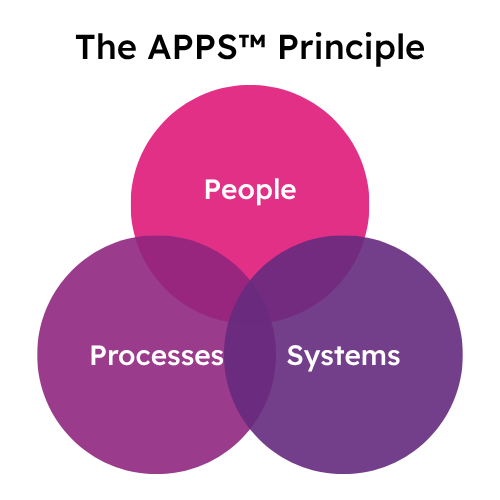Maximising Your ERP System: 5 Strategies for Optimal Performance
Many businesses invest in ERP (Enterprise Resource Planning) systems to streamline their operations, but often these systems don’t reach their full...
3 min read
Bradley Michel
:
Oct 21, 2025 11:00:00 AM

In today's fast-paced business environment, it's tempting to believe that all the right systems will solve all your problems. Many companies, under pressure to deliver quick results, invest heavily in new tools like CRMs, automation platforms, or analytics suites. However, this approach often leads to expensive systems with low adoption rates, inconsistent processes, and frustrated employees.
The allure of new technology is strong because it offers a tangible solution that can be purchased, installed, and demoed. Yet, despite significant investments in digital transformation, many organisations find themselves "busy but not better." They may have more tools at their disposal, but these tools often leave core issues unaddressed. Misalignment between people, processes, and systems results in inefficiency, silos, and stalled growth.
To break free from the cycle of disappointment, businesses need to shift their focus from technology to alignment. The APPS Principle™, developed by Cogent Connective, provides a holistic framework for achieving sustainable growth. This principle asserts that lasting success is only possible when three critical pillars are aligned: People, Processes, and Systems.
By treating these pillars in isolation, organisations guarantee wasted investment. However, aligning them creates a foundation for growth that compounds year after year.
Every system, process, and initiative ultimately relies on people. You can have the best workflows mapped out and the most advanced technology deployed, but if the humans responsible for executing the work don't understand, adopt, or believe in it, the entire effort will collapse.
Resistance to new systems is natural and often stems from fear of disruption. Employees worry about being replaced or judged for struggling to adapt. Leaders who overlook this resistance are often surprised when adoption falters. Successful organisations bring people into the process early, involving them in system design and process improvement. Clear communication about the benefits of change and visible leadership commitment are crucial for gaining buy-in.
Processes are the bridge between strategy and execution. They determine whether good intentions turn into consistent results. Without clear, efficient processes, organisations drift into chaos, resulting in duplicated work, missed handoffs, and inconsistent customer experiences.
The temptation in digital transformation is to automate quickly. However, automation is only valuable if the underlying process is efficient. Streamlining first ensures that when technology is applied, it accelerates value, not waste. Organisations should start with mapping their current workflows, identifying gaps and inconsistencies, and involving stakeholders in the redesign process.
Systems should be the enabler, not the driver, of change. They are most effective when built on strong foundations of aligned people and optimised processes. Technology can amplify processes, but only if those processes are sound. Automating a broken process just creates "faster chaos."
Choosing the right system involves evaluating its alignment with workflows, scalability, integration capabilities, and usability. A system that cannot integrate with other tools creates silos. Successful organisations design technology stacks that work together, providing a single source of truth across teams.
Consider a mid-sized B2B services company that invested heavily in a new CRM to solve declining sales productivity. The system was powerful and well-regarded in the market, but within six months, it became a graveyard of half-filled records. Reps kept spreadsheets on the side, and managers pulled numbers manually. The technology was not faulty—it was simply misaligned with the company's people and processes.
By applying the APPS Principle™, the company shifted its focus. They conducted workshops with sales reps to understand frustrations, redesigned training to be role-specific, and coached managers to use CRM data in coaching conversations. Processes were standardised across departments, and the CRM was reconfigured to match redesigned workflows. As a result, CRM adoption jumped by 70%, forecast accuracy improved dramatically, and pipeline velocity increased by 25% in six months.
The path to sustainable growth lies not in the latest technology but in the alignment of people, processes, and systems. The APPS Principle™ offers a structured, repeatable methodology for achieving this alignment. By focusing on real-world examples, we see that proper alignment leads to improved collaboration, efficiency, and scalability.
If your organisation has invested in systems but isn't seeing the expected results, it's time for a different approach. Start with aligning your people, optimising your processes, and then implementing systems as enablers. Your future growth depends on it. Let’s build it together.
Here's some others we think you'll love

Many businesses invest in ERP (Enterprise Resource Planning) systems to streamline their operations, but often these systems don’t reach their full...

Are you an operations manager drowning in a sea of manual tasks, duplicated efforts, and disconnected systems? You're not alone. Many businesses...

Understanding the Reasons Behind Procrastination Procrastination often stems from a fear of change or uncertainty about the future. Many individuals...